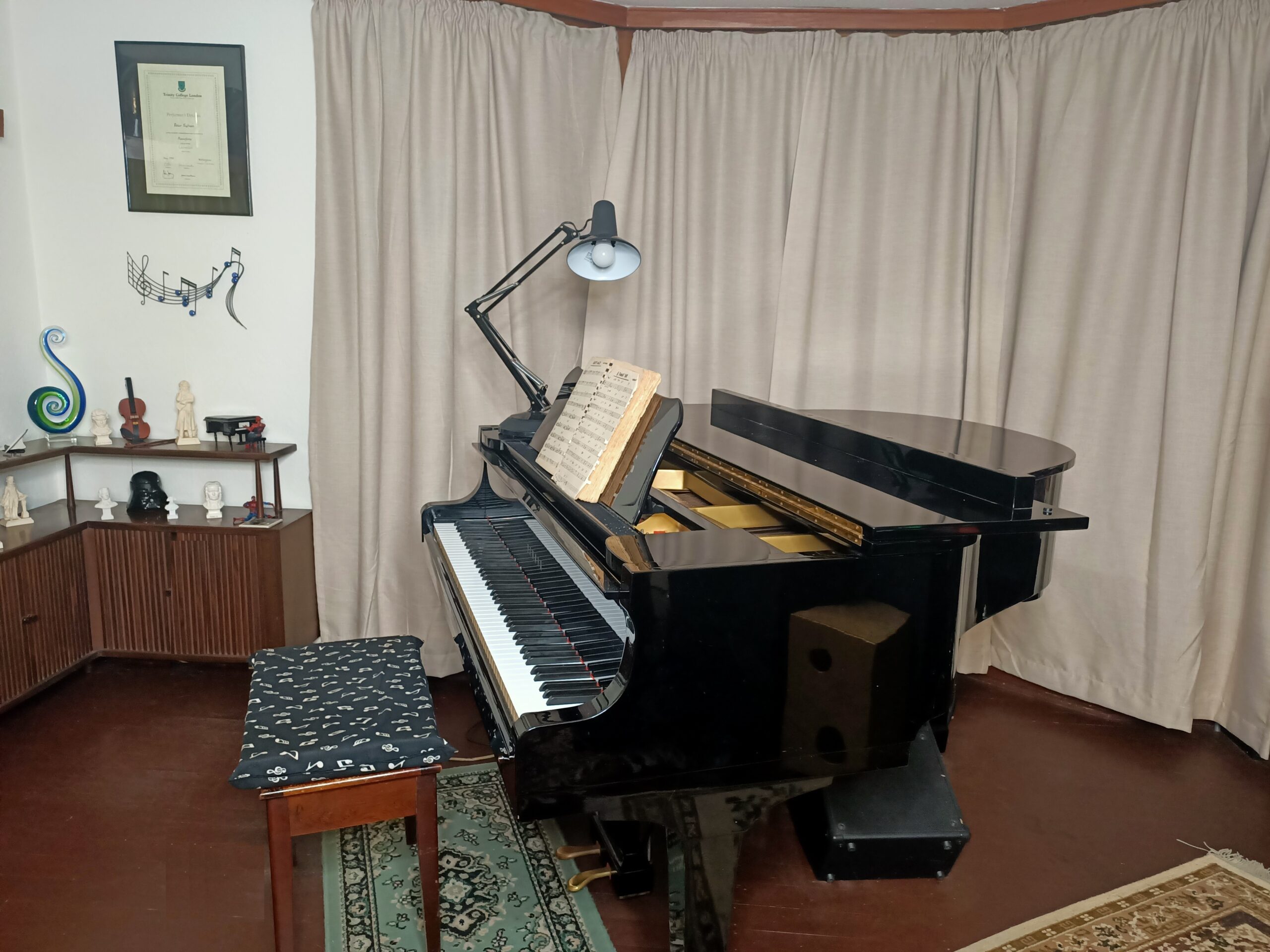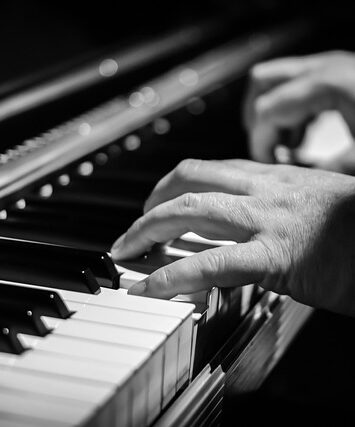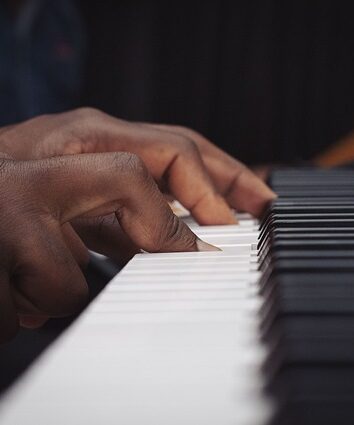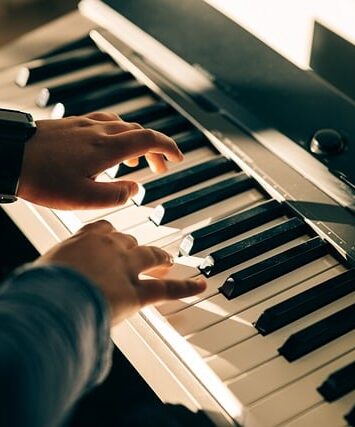
Peter Feehan
LCTL, AIRMT NZ
Private piano lessons in the Wellington area
Tuition Styles
JAZZ
The Jazz Standards are full of great tunes and have good variety. The list of standards grows constantly as more popular works are explored by different artists and our favourite tunes become an amazing pool of inspiration. It is through these tunes that we get a starting point to work on:
- The Chord system and chord voicing.
- Soloing tools such as scales modes arpeggios pentatonic scales etc. How to play them and where to use them
- Chord progressions. The wonderful 2 5 1 and all its friends.
- Blues; Blues scales and forms. Tunes and improvisation.
- Recording; Students enjoy recording performances of their work. An excellent way of tracking progress.
- Transcription, (the ability to work out a tune by ear) enables the student to work on any tune they can hear.
MODERN (POP)
This is where I cut my teeth, I love this music and it is full of valuable learning experiences.
There are many ways to explore this field:
- Playing sheet music of popular tunes, there is an ever increasing library of good music to be learnt.
- Chord knowledge, An extremely useful tool for your working musician.
- Transcription. Working out tunes from listening is a great asset to a musician and a core skill for pop music. It helps you to understand the artists intent.
- Grouop playing, Learning band parts or accompaniment parts to support a vocal and other musicians. Singing and playing is the ultimate and best fun to be had. Be warned it is also tricky.
- Fundamentals, to help students with their projects. Problem solving for your creations.
CLASSIC
There is a wonderful amount of great music in this area ranging from Bach 1685 to modern day composers. Students can take this as far as there time and energy permits.
- Exams are available for those who enjoy the challenge. They are challenging and often require longer lesson times. There are now digital exams available with multiple assessment dates.
- I provide small playing groups for the students who enjoy performance.
- Also through the Institute of Register Music Teachers There are Performance opportunities available.
- A great deal of my students prefer to learn through simply playing pieces that they enjoy without the pressure of exams. This can produce fun lessons and great results.
- Theory is the understanding of the language. This is best taught in a conversation and related to the works being played. The theory exams and workbooks are available for those who do enjoy them.
Many of my students like to explore all styles. A bit of Pop, classical and Jazz and find this helps there overall musical enjoyment. My main goal is to have happy students exploring music.
IMPROVISATION
An ancient art form that is not only the domain of the jazz player. The masters including Bach and Beethoven improvised well and used it as a creative tool. Improvisation is a passion and speciality of mine. I love to teach this through the following areas.
- Space; Less is more.
- Dynamics and Articulation; Creating variety in how we tell our tale.
- Structure; Using repeats and form to creat the story line.
- Conversation; Music as a language.
- Imagery; Creating pictures with our sound. Using our response to visual thoughts to create.
- Composition; Creating works to be explored. My book Hataitai Garden Available from SOUNZ is a good example of this.
You may see that I have not included jazz harmony in theses points. All though Jazz harmony is fascinating and very well covered in Jazz lessons, it is not the be all and end all of improvisation. It can sometimes turn into a bit of a rabbit whole and detract from the freedom of improvisation. So, we simply remember two things. The wrong notes are the interesting one and you are only ever a semitone away from the right note.
THEORY
Theory is important and encouraged. The style tends to dictate what the most useful theory to learn is. And therefore that is the theory that I teach the student E.g. Chord knowledge for pop musicians or grade 5 classical for exam students
EAR TRAINING
Using the ear in music should always be encouraged from the outset. What we write down on the paper are simply the instructions to the musician what you hear with your ear is the music. The quality of the listening definitely contributes to the quality of the playing. A good ear is a wonderful thing and can always be worked on.
Skills and tools we can practice and work on:
- Recognition of intervals, chords, pulse etc.
- Transcription of tunes. A very handy skill for our pop and jazz enthusiast.
- If you can sing it you can play it. Learning to play what we hear.
- Practicing exam or audition tests. Plenty of students have devoted their lesson time to these skills.
ONLINE TRAINING
Online Teaching is available,and very useful
Online lessons are proving popular and enabling me to teach people outside of the Wellington area. Please just let me know if you wish to go online.
There are three different online platforms that I currently use they are;
- WhatsApp:
This just requires an exchange of phone numbers and then we’re good to go. It also has a pretty good sound so currently this is my favourite. - Facebook messenger:
This platform requires a friend request to be accepted and then we can just use the video chat section of messenger. The sound can be good but also fluctuates to poor when experiencing high usage. - Zoom:
A zoom meeting can be set up using the students mobile phone number. The sound settings need to be changed in order to improve sound quality for the lesson. Go into settings and enable original sound. This will stop zoom compressing the music. - Your Studio:
It’s important that your workspace is set up to suit you. So, don’t worry to much about how well I can see. It is more important that I can hear you well so do try and have a quite space. You will also find the connection quality is dependent on many things. Some out of our control so often patience is the best tool.
Students Testimonials
Find all the student testimonials on Finda



